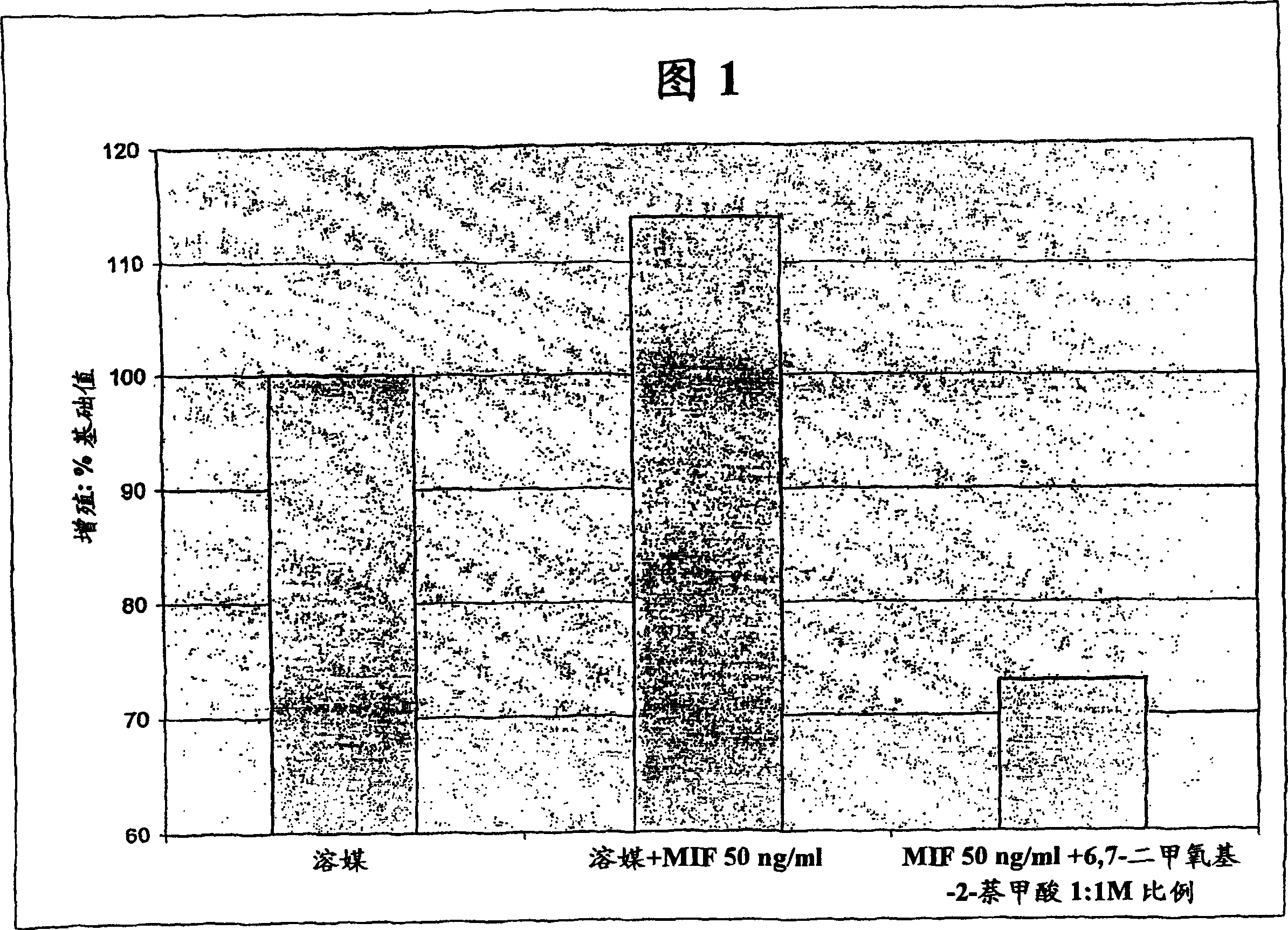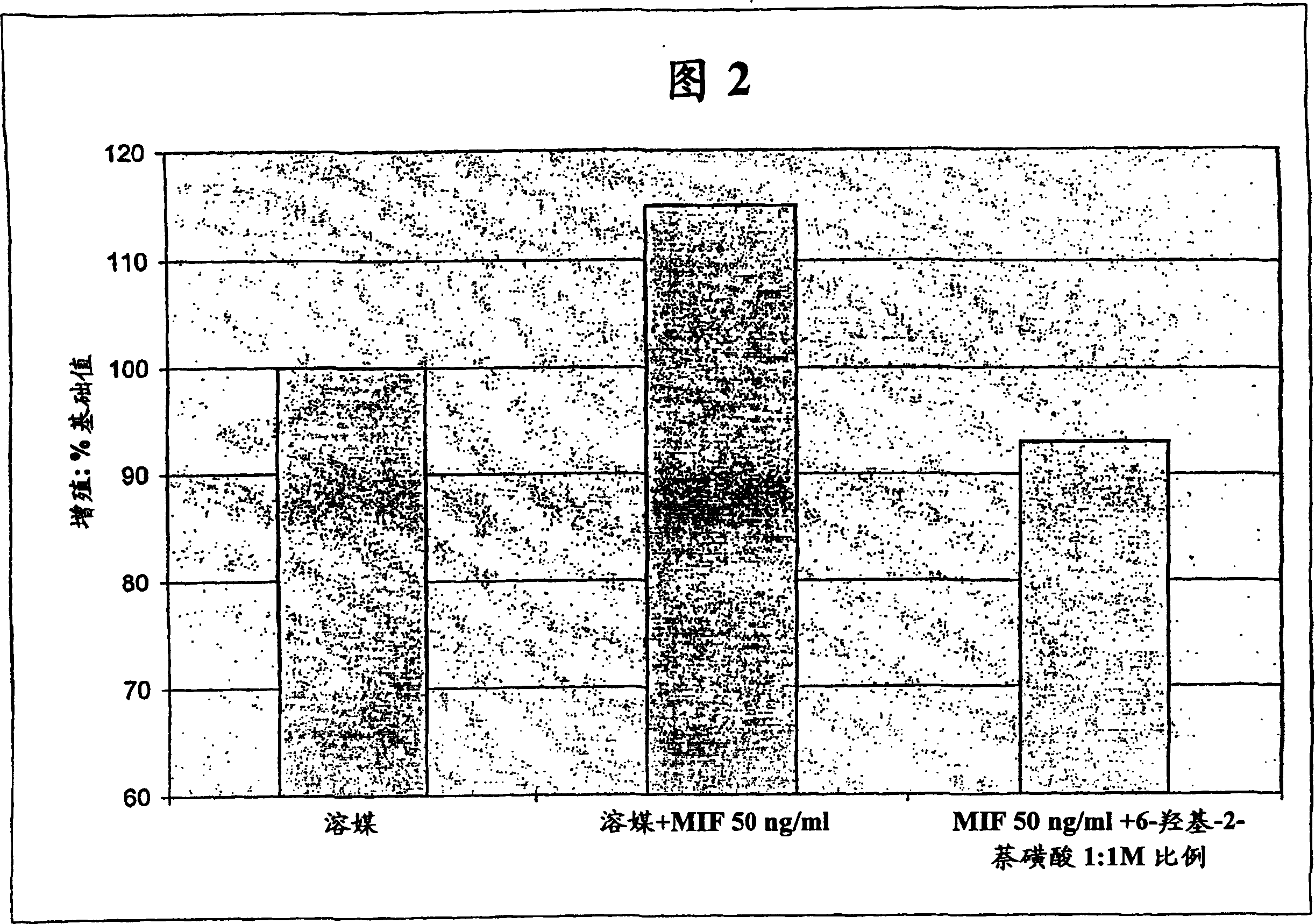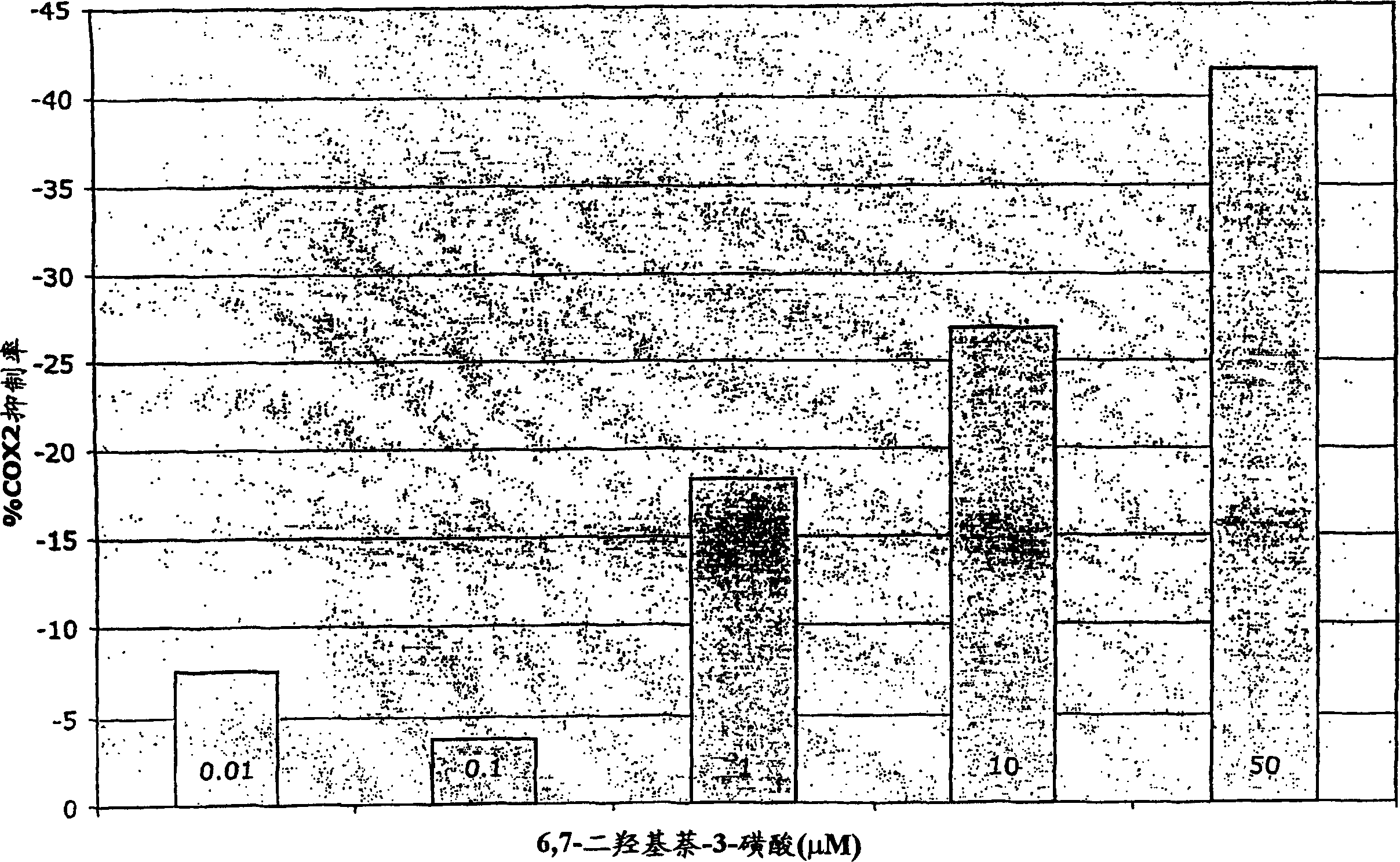Napththalene derivatives which inhibit the cytokine or biological activity of macrophage migration inhibitory factor (MIF)
A biological activity, cytokine technology, applied in the direction of sugar derivatives, sugar derivatives, organic active ingredients, etc.
- Summary
- Abstract
- Description
- Claims
- Application Information
AI Technical Summary
Problems solved by technology
Method used
Image
Examples
Embodiment 1
[0434] Example 1: 6,7-dimethoxy-2-naphthalene
[0435] 2,3-Dimethoxynaphthalene
[0436]
[0437] (1) (2)
[0438] A suspension of 2,3-dihydroxynaphthalene (5.00 g, 0.0312 mol) in water (25 mL) in a three-neck round bottom flask was cooled with an ice bath. Two constant pressure funnels were installed and dimethyl sulfate (7.20 mL, 9.57 g, 0.0759 mol) and aqueous potassium hydroxide (5.57 g, 0.0993 mol, 17.0 mL of water) were charged into the two funnels respectively. The two solutions were added dropwise together over 10 minutes, initially the suspension dissolved and then a precipitate formed. The reaction was left overnight at room temperature. The solid was filtered, washed with water until the washing liquid was neutral (5×200 mL), and then dried to obtain 2,3-dimethoxynaphthalene (4.09 g, yield 70%) as a white powder;
[0439] R f : 0.71 (19:1 CHCl 3 : MeOH), 0.82 (9:1 CHCl 3 : MeOH),
[0440] mp: 112-113°C, literature mp: 113-116°C;
[0441] ...
Embodiment 2
[0443] Example 2: 6,7-dimethoxy-2-acetylnaphthalene
[0444]
[0445] (twenty three)
[0446] A suspension of aluminum chloride (6.02 g, 0.0451 mol) in sieve-dried nitrobenzene (10 mL) was cooled in an ice bath, and acetyl chloride (3.57 mL, 3.93 g, 0.0501mol). A solution of 2,3-dimethoxynaphthalene (7.52 g, 0.0400 mol) in nitrobenzene (25 mL) was added over 10 minutes. The reaction was stirred at 0°C for an additional 60 minutes and then left at room temperature overnight. The mixture was poured into a mixture of ice (60 g) and 10% HCl (100 mL). Chloroform (300 mL) was added and the two phases were separated. The aqueous layer was further extracted with chloroform (2 x 150 mL), the combined organic layers were washed with 5% aqueous sodium hydroxide (3 x 100 mL) and water (2 x 100 mL), dried over anhydrous sodium sulfate, filtered and evaporated in vacuo to give a brown Oil. The oil was purified by flash column chromatography (silica gel, chloroform) ...
Embodiment 3
[0451] Example 3: 6,7-dimethoxy-2-naphthoic acid
[0452]
[0453] (3) (4)
[0454] Sodium hypochlorite (55 mL, 12.5% w / v) was first added to a solution of sodium hydroxide (1.80 g, 0.0450 mole) in water (5.5 mL). The solution was heated gently to 45°C, then 6,7-dimethoxy-2-acetylnaphthalene (2.50 g. 0.0187 mole) was added. When the temperature was gradually raised to 85°C, the suspension dissolved, and the solution was kept at 85°C for another 60 minutes. The solution was then cooled to room temperature and filtered to remove a small amount of orange gum. Then add a small amount of sodium bisulfite (the amount at the end of the spatula) to the filtrate until the iodine / starch paper no longer turns black. The solution was then cooled in an ice bath, and concentrated hydrochloric acid was added dropwise to pH 1. The resulting white precipitate was filtered off, washed with cold water (3×20 mL), and dried over a desiccant under vacuum to give 6,7-dim...
PUM
 Login to View More
Login to View More Abstract
Description
Claims
Application Information
 Login to View More
Login to View More - R&D
- Intellectual Property
- Life Sciences
- Materials
- Tech Scout
- Unparalleled Data Quality
- Higher Quality Content
- 60% Fewer Hallucinations
Browse by: Latest US Patents, China's latest patents, Technical Efficacy Thesaurus, Application Domain, Technology Topic, Popular Technical Reports.
© 2025 PatSnap. All rights reserved.Legal|Privacy policy|Modern Slavery Act Transparency Statement|Sitemap|About US| Contact US: help@patsnap.com



